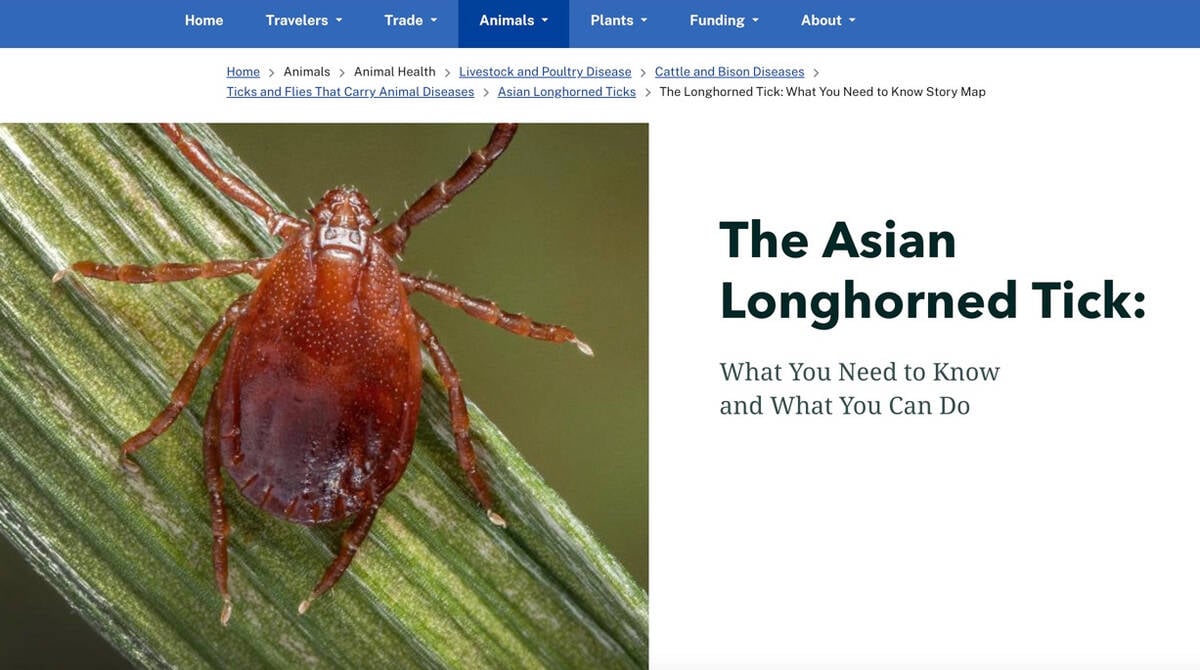RED DEER — Ten years ago, the Dutch were among the lowest consumers of antibiotics in human medicine, but they were the number one user of antibiotics in veterinary medicine.
Social and political pressure to reduce the use in livestock has changed the way the industry deals with disease, said Tine van Werven of the faculty of veterinary medicine at the University of Utrecht.
Much of the pressure to reduce use was connected to the growing problem with bacteria resistant to common antibiotics in human medicine. Livestock producers were often blamed for increased resistance.
Read Also

New World screwworm not seen as trade threat
Canadian cattle producers shouldn’t be worried about the New World screwworm, which has become a massive concern for ranchers in Mexico and is threatening the southern United States
“There is still not a lot evidence that the resistance we see in food animals is responsible for the resistance problems showing up in human medicine,” she said at the Western Canadian Dairy Conference held in Red Deer March 9-11.
Nevertheless, antibiotics should be used prudently and every sick animal should be treated.
In 2008, a Dutch antibiotics policy supported by government, livestock associations and veterinarians was formed to reduce overall use, while encouraging careful use.
A mandatory reduction scheme set by government with 2009 as the reference year called for 20 percent reduction by 2011. The next phases set targets of 50 percent reduction by 2013 and 70 percent reduction for 2015.
“We reduced faster than everybody could expect,” she said.
There was resistance to the policy, but van Werven argues great strides have been made in reducing use and improving animal health.
“The only reason we don’t see more diseases is we focus much more on management and vaccines,” she said.
Total reduction of antibiotic use for all species was 68 percent across the country.
Under the new scheme, each farmer has a contract with a veterinarian who prescribes drugs. There are no over-the-counter sales of antibiotics, although vets are allowed to sell them. There were earlier proposals to take that away from them and set up veterinary pharmacies.
The government also banned the use of antimicrobials used as preventive measures.
Farms receive annual vet visits to work on health-care protocols and risk assessments for disease. Records on medicine use, doses, treatments, withdrawal times, duration and written treatment protocols are also checked.
In addition, veterinarians must enter prescription information and other treatments into a national database within two weeks of treatment. Records are kept on dosage, species and animal weights.
“On each farm, we know exactly how antibiotics were used in one year,” van Werven said.
Veterinarians are benchmarked as well to look at the amount they prescribe. Overuse at the farm or by a vet is flagged and warnings may go out to offenders.
The initiatives have led to reduced antibiotic use and an emphasis on better nutrition, hygiene and animal husbandry to reduce risk of disease. As well, greater emphasis has been placed on health monitoring and vaccinations to prevent diseases like bovine viral diarrhea or infectious bovine rhinotracheitis.
In Canada, as of Dec. 1 this year, all livestock producers will require veterinary prescriptions for medically important antibiotics. The list can be found at www.beefresearch.ca/AMR.















